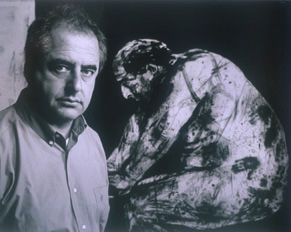The Divine Comedy opened at the VAG this week, a triad of artists: Francisco Goya, Buster Keaton and William Kentridge. We watched a video, Drawing the Passing, about William Kentridge, an animator/illustrator from South Africa who uses satire to explore current events, the idea of comedy vs conflict to illuminate.

He creates large scale charchoal drawings, but only about 20 per animation. He alters each drawing many times, by erasing and drawing over the images, so there are traces of the previous drawings left. Very evocative, expresses memory and impression so beautifully. His drawing practise was first a tool to develop oil painting, but then he turned to it as a means to express himself. Influenced by German Expressionism and Russian Constructivism.
Films
Stereoscope
Felix in Exile
Monument

Felix is a reocurring subject of Kentridge's films. often shown as a split between a naked male figure and a classic business man in suit. And ultimately, he is a self-portrait, as Kentridge uses himself, and a mirror, as a physical reference. He quotes Mikofsky "stroke the black cats and we'll wire the trams" (??) as a reference for the cat images in his work, and sees art "bridging the gap between what we see and what we know."

He creates large scale charchoal drawings, but only about 20 per animation. He alters each drawing many times, by erasing and drawing over the images, so there are traces of the previous drawings left. Very evocative, expresses memory and impression so beautifully. His drawing practise was first a tool to develop oil painting, but then he turned to it as a means to express himself. Influenced by German Expressionism and Russian Constructivism.
Films
Stereoscope
Felix in Exile
Monument
Felix is a reocurring subject of Kentridge's films. often shown as a split between a naked male figure and a classic business man in suit. And ultimately, he is a self-portrait, as Kentridge uses himself, and a mirror, as a physical reference. He quotes Mikofsky "stroke the black cats and we'll wire the trams" (??) as a reference for the cat images in his work, and sees art "bridging the gap between what we see and what we know."
